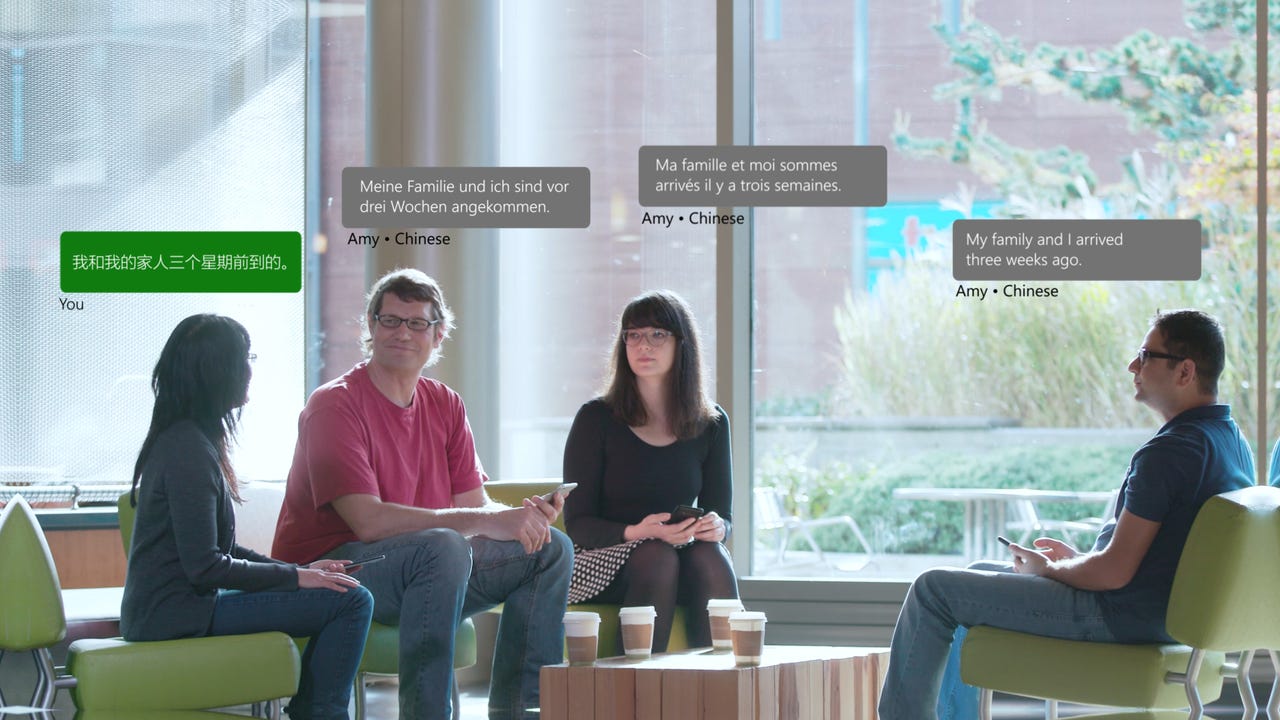Microsoft AI: Now you can get universal language translator for groups


The app allows groups of people who don't speak the same language to communicate.
Science fiction has moved one step closer to science fact, with Microsoft's launch of a universal translator, an application that allows conversations between groups of people speaking different languages to be translated in real time.
Using technology based on Skype Translator for mobile and landline calls, Microsoft Translator allows people to have face-to-face conversations in different languages with the aid of an application that immediately translates the speech to text.
The application can translate multiple languages at once, as Microsoft demonstrated at its Future Decoded event in London last month. The demo showed three people in a conversation, each speaking a different language: French, English, and German.
Each speaker had a smartphone application that displayed what the different participants were saying in text. The demo also showed a transcript of the conversation in Chinese -- as well as displaying text in Klingon, the language of the fictional race of the same name in Star Trek, the TV show that introduced the idea of a universal translator.
The application can translate for groups conversing in sixty different languages, ranging from widespread dialects like Spanish, Arabic Chinese, to less common tongues including Welsh, Samoan, and Afrikaans. All the users need to use the service are the Microsoft Translator app and a connector code to send to anyone else in the conversation.
"Almost everyone has a smartphone on their person," says Tanvi Surti, a program manager on the Microsoft Translator team which has developed the Microsoft Translator live feature. The team came to the conclusion that an app -- as well as a standalone website -- was the best means of moving the technology forward.
The team fashioned the technology to integrate with the existing Microsoft Translator app, as well as with a standalone website.
"We spent a lot of time thinking about the set-up experience," says Surti. "Let's say you and I speak two different languages, how do we get connected quickly without spending too much time thinking about how to connect and spending more time in the conversation itself?"
The application is designed with simplicity in mind, but the technology behind Microsoft Translator is powered by cloud-based algorithms, which use deep neural network translations that are capable of more human-sounding translations than previous technology. The underlying platform is designed to learn from experience, improving translations as it learns from human speech.
"At the end of the day, our goal is breaking the language barrier," says Olivier Fontana, director of product strategy for Microsoft Translator. "ls the quality perfect? No. Is the setup totally seamless? No. But really, once you get set up, you have a universal translator experience among multiple people talking in multiple languages."
The technology has been successfully trialled by The Children's Society in London, which works with migrants, refugees, and victims of human trafficking who don't necessarily speak English well.
"They are all asylum seekers and a large number of them have issues around language," said The Children's Society's James Simmonds-Read said. "Very frequently, we need to use translators."
However, by trialling the Translator app, the organisation is able to directly communicate with those it is trying to aid, helping them feel less isolated.
Microsoft hopes the application will prove useful to a wide cross-section of society, including support groups, such as The Children's Society, government immigration departments, and tourists.
Microsoft Translator is available to download from the Microsoft website, as well as the Google Play store for Android and the App Store for iOS.